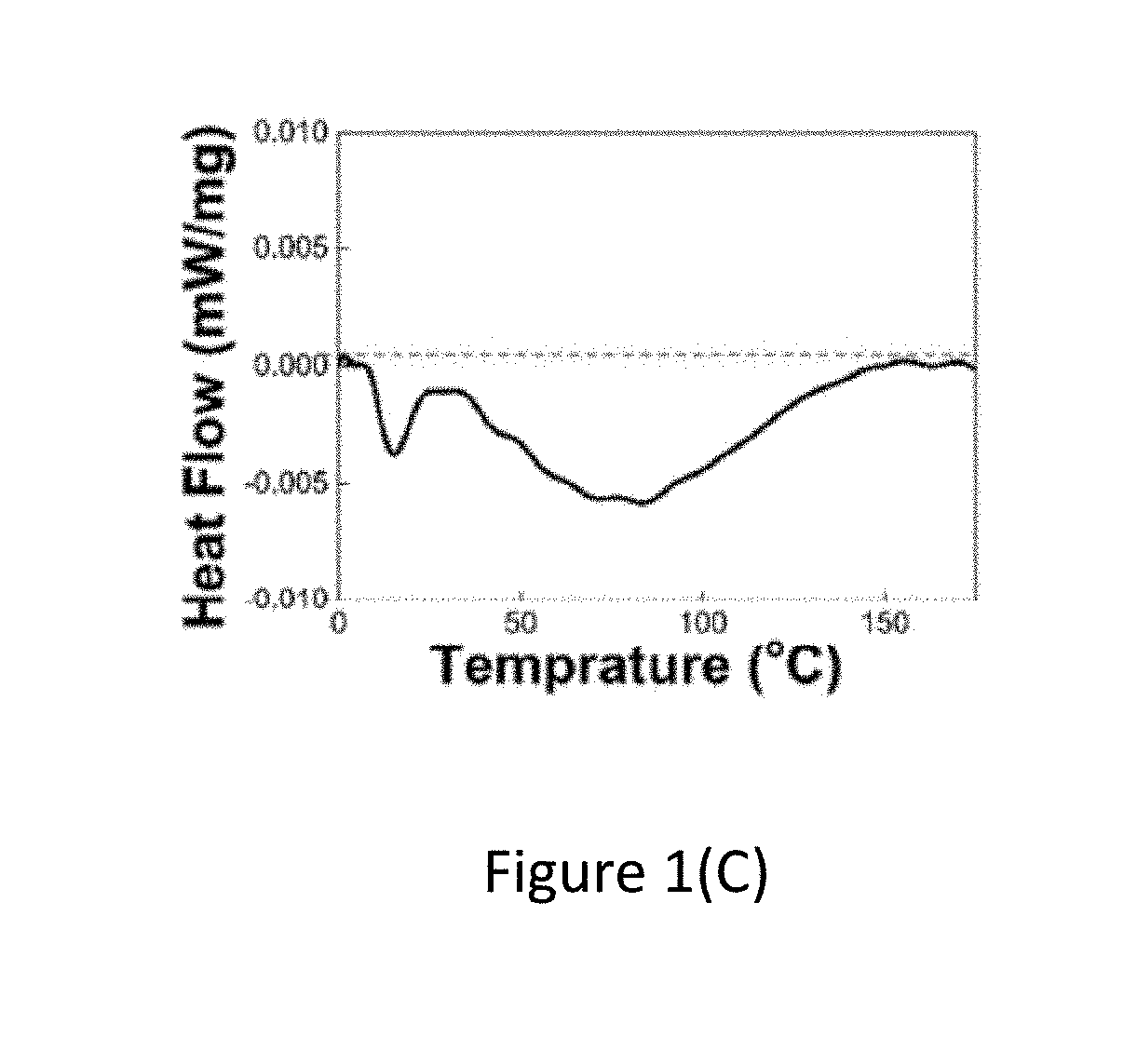Process for forming a substance with a superstructure and Application Thereof
a technology of janus particles and superstructure, which is applied in the direction of emulsion delivery, microcapsule delivery, capsule delivery, etc., can solve the problems of difficult preparation of high-quality and large-scale self-assembled superstructures, and achieve the effect of potential application in biomedical fields and easy scaling up
- Summary
- Abstract
- Description
- Claims
- Application Information
AI Technical Summary
Benefits of technology
Problems solved by technology
Method used
Image
Examples
example 1
of the Elastomer Consisting of the Carbon Dots
[0056]Glyceryl trioleate as a precursor was used to form the carbon dots at 220° C. for 3 days, mainly through condensation, polymerization, carbonization, and passivation of glycerol trioleate. At this temperature, glyceryl trioleate was decomposed slowly to form glycerol and oleic acid, which then led to form the carbon dots. When the carbon dots solution was slowly cooled down, it became more viscous and eventually formed the elastomer (FIG. 1(A)) at ambient temperature (25° C.).
[0057]The HRTEM (High Resolution Transmission Electron Microscopy) image depicted in FIG. 5 displays that the elastomer consists of the carbon dots (<1 nm) with hexagonal closest packing, revealing that the elastomer was formed through self-assembly of the carbon dots. The reasoning was supported with a reconstructed HRTEM image as shown in FIG. 1(B) that had been obtained after removing non-periodical signals from the original TEM image by applying a Fourier ...
example 2
of the Janus Particles
[0059]The elastomer obtained by Example 1 was converted easily to the Janus particles by treating the elastomer with NaOH / ethanol solution. Under the alkaline condition, some of the hydrophobic oleate groups on the surfaces of the carbon dots in the elastomer were released to the bulk solution, leading to exposure of OH groups on the surface of the hydrophilic superstructures of the carbon dots as evident with the Fourier transform infrared spectra (FT-IR) shown in FIG. 7(A), FIG. 7(B) and FIG. 7(C). The elastomer provides a weak signal at 3420 cm−1 of the peak assigned for O—H stretching and a strong signal at 1710 cm−1 assigned for C═O stretching, revealing the existence of ester groups on their surfaces. Upon increasing NaOH concentration, the intensity ratio of νO—H / νC═O increased. At 0.5 M NaOH, the signal for νC═O becomes negligible, revealing most of the ester groups in the elastomer were converted to OH groups.
[0060]FIG. 8 shows when the solution of the...
example 3
of the Substance with the Superstructure
[0064]A salt out method is applied to treat the as-formed Janus particles by controlling NaCl concentration for forming the substance with the superstructure comprises vesicle and hydrogel. At 0.1 and 100 mM NaCl, hydrogels and vesicles, respectively, were prepared from the Janus particles through self-assembly as shown in FIG. 4. Unlike regular lipid molecules with a glycol or phosphate glycol as a head group, the Janus particles can be used to prepare various superstructures through simple control of the ionic strength, mainly because the Janus particles possess a much larger head group and a great number of long alkyl chains on the surface of each the carbon dots.
[0065]The TEM image displayed in FIG. 2(B) shows that the vesicle has an onion-like double-layered structure. Through van der Waal interactions, the Janus particles with solvophobicity properties formed the vesicles. When compared to traditional liposomes prepared from lipids or po...
PUM
| Property | Measurement | Unit |
|---|---|---|
| diameter | aaaaa | aaaaa |
| ionic strength | aaaaa | aaaaa |
| ionic strength | aaaaa | aaaaa |
Abstract
Description
Claims
Application Information
 Login to View More
Login to View More - R&D
- Intellectual Property
- Life Sciences
- Materials
- Tech Scout
- Unparalleled Data Quality
- Higher Quality Content
- 60% Fewer Hallucinations
Browse by: Latest US Patents, China's latest patents, Technical Efficacy Thesaurus, Application Domain, Technology Topic, Popular Technical Reports.
© 2025 PatSnap. All rights reserved.Legal|Privacy policy|Modern Slavery Act Transparency Statement|Sitemap|About US| Contact US: help@patsnap.com



